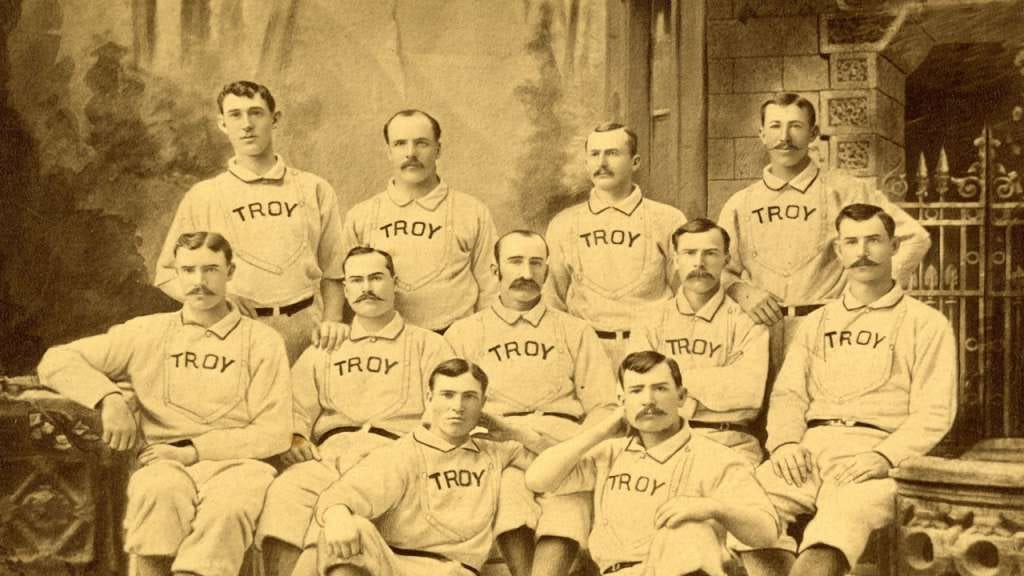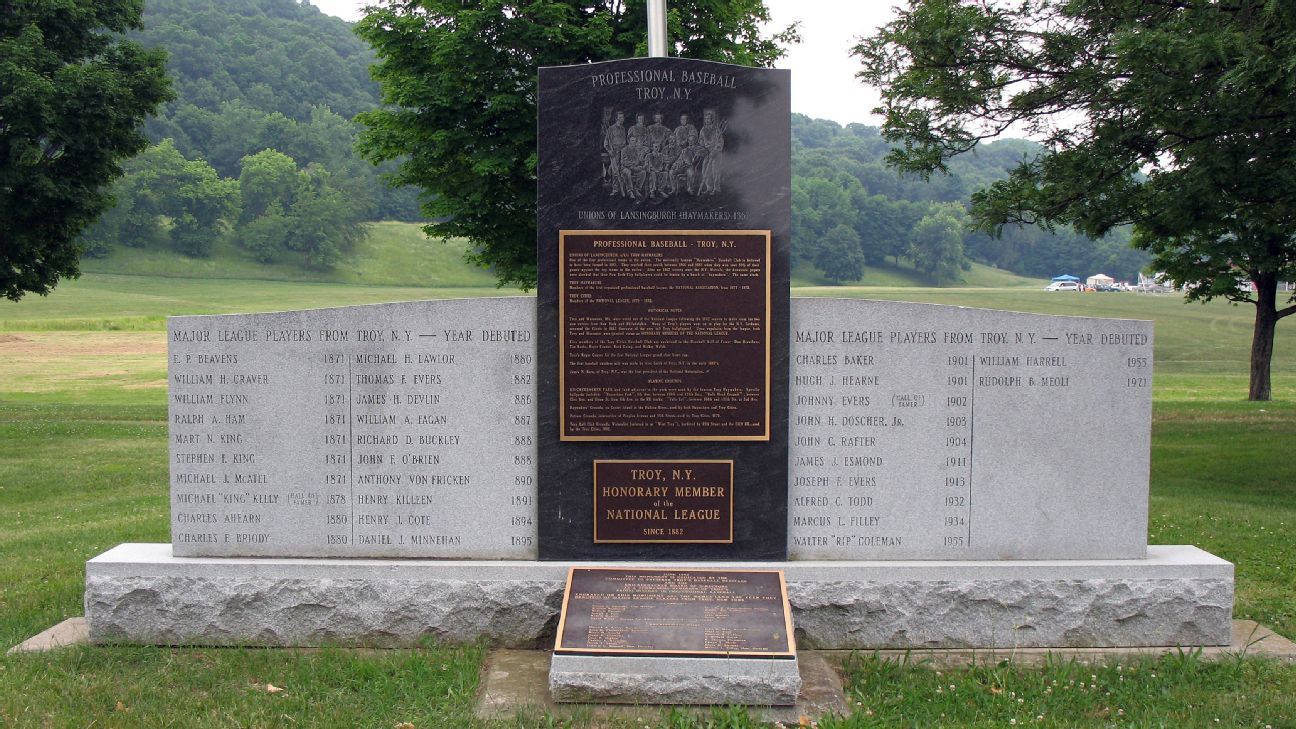
It seems surprising now but in the early years of organized professional baseball leagues, the upstate New York city of Troy hosted two clubs - in 1871 the Troy Haymakers were one of the founding members of the first professional league, the National Association of Professional Base Ball Players and from 1879 through 1882 the Troy Trojans were part of the National League, founded in 1876.
In the late 19th century Troy was one of the wealthiest cities in the United States with a booming economy based on manufacturing steel, iron, and engineered mechanical and scientific equipment. In 1880 its population of 56,747 was greater than its estimated population in 2019 (49,514). A few miles south lay the state capital Albany with a population of 90,758 in 1880 but not as prosperous as booming Troy.
In 1871 when the Haymakers joined the National Association they were already a well-established club, having been founded in 1860 as the Union Baseball Club Lansingborough, a neighboring small town. In 1869 when professional teams were first allowed to participate in the then-amateur National Association, the Haymakers joined in and were one of the seven founding teams for the professional National Association in its inaugural 1871 season.
That first season the Haymakers went 13-15 finishing sixth in the nine team league which included two other clubs from smaller cities, the Fort Wayne (Indiana) Kekiongas and the Rockford (Ill) Forest Citys. Troy's star player and manager was slugger Lip Pike, the first great Jewish ballplayer, who led the team in batting (.377) and the league with 4 home runs.
(Lip Pike)

By the start of the 1872 season, Lip had moved on to join the Baltimore team but the Haymakers were more successful, winning 60% of their games. Unfortunately, the team dropped out of the league halfway through the season "on account of an empty treasury". That was not unusual in those days - only 4 of the 11 teams in the league played the full 54 game schedule.
By the next time Troy fielded a professional team, the National League had expanded its schedule to 75-84 games and there was a great deal more stability among the teams. That year the other clubs were based in Boston, Providence, Buffalo, Chicago, Cincinnati, Cleveland and Syracuse. The presence of three teams in upstate New York made sense; the area was a baseball hotbed and the upstate cities of Troy, Albany, Schenectady, Utica, Syracuse, Rochester and Buffalo were all booming, in contrast to their condition today.
The debut 1879 club finished last with a 19-56 record, marred by a mid-season slump when it lost 31 of 34 games. The following year the team marked its best season, its 41-42 record good for 4th place. This time around a mid-season spurt winning 17 of 23 games helped. Home games in 1879 were played at the Putnam Grounds, which is today a park.

The 1880 and 1881 home field was the former Haymakers Grounds in Troy while the final season home games were played on the other side of the Hudson River at grounds in Watervliet.
The Trojans had a discouraging start to the 1881 campaign losing their first 7 contests and played .500 ball the rest of the way, finishing 5th. There were two franchise shifts during the 1880-81 seasons, the Syracuse team moving to Worcester and Cincinnati migrating to Detroit.
By 1882 the National League had its sights set on expanding into bigger cities and during the season notified Troy and Worcester they would not have franchises in the 1883 season when the league would place new teams in New York and Philadelphia. The team was playing .500 ball at the time with a 30-31 record and then lost 17 of its next 18. The Trojans played their final 19 games on the road and recovered at the end winning four straight but still ending up in 7th place with a 35-48 record. The final three contests were against Worcester which was also being evicted from the league. It must have been a discouraging end to the season. It certainly was for the Worcester fans - only 25 attended the final game and only 6(!) were in the stands the day before.
Though the four seasons in Troy were not marked with great success quite a number of well-known players spent time with the team, including five future Hall of Fame members.
The player-manager during the years in Troy was Bob Ferguson, whose nickname, "Death to Flying Things", reflected his defensive skills. Though not a Hall of Famer, Ferguson was well-respected, managed for many years after his stint in Troy and later became a famous umpire.
(Bob Ferguson)

That year also saw the debut of a 21-year old rookie, Dan Brouthers, who played two seasons with the Trojans. Dan later won 5 batting titles and is in the Hall. The 1880 team saw the debut of four future Hall of Fame members, pitchers Tim Keefe and Mickey Welch, outfielder Roger Connor, and Buck Ewing, considered the greatest catcher of the 19th century.
In 1883, Welch, Connor and Ewing joined the Gothams (later the Giants) for the first season of the New York team. After going 69-64 in his three seasons with the Trojans, Welch went 216-123 in the next seven for the New York squad. Connor became one of the greatest 19th century sluggers and held the career home run record until Babe Ruth surpassed him in 1920.
Tim Keefe first joined the New York club of the fledging American Association and then jumped to the Gothams winning 250 games in the next seven years and racking up 41 triumphs during his three Trojan seasons.
No comments:
Post a Comment